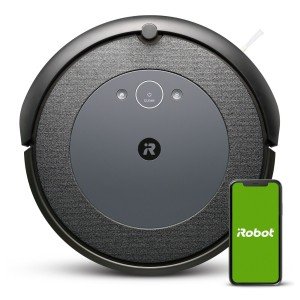The Rise of Automatic Hoover Robots: Revolutionizing Home Cleaning
In today's hectic world, technology continues to reshape the method we live and work. Amongst the developments making a substantial effect on homes are automatic hoover robots, often described just as robot vacuums. These intelligent cleaning makers guarantee not just convenience but likewise effectiveness in preserving clean home. automatic cleaning robot out the development, benefits, restrictions, and future of automatic hoover robots.
The Evolution of Automatic Hoover Robots
The principle of automated cleaning gadgets goes back to the early 20th century, however it wasn't until the advent of sophisticated robotics, sensors, and artificial intelligence that robot vacuums became viable. The following table highlights key milestones in the evolution of automatic hoover robots:
| Year | Turning point |
|---|---|
| 1996 | The first automatic vacuum is presented by Electrolux. |
| 2002 | iRobot launches the Roomba, a consumer-grade robot vacuum. |
| 2010 | Introduction of sophisticated mapping technology and collision sensing units. |
| 2016 | Robotic vacuums start integrating with smart home systems. |
| 2020 | Increased adoption of AI and artificial intelligence for much better cleaning algorithms. |
How Automatic Hoover Robots Work
Automatic hoover robots run using a mix of sensing units and algorithms to browse household areas. Below are crucial components that add to the performance of these machines:
- Sensors: Lidar (light detection and ranging), infrared, and cliff sensing units assist the robot map the location and avoid barriers.
- Mapping Technology: Many models now use sophisticated mapping capabilities, enabling efficient navigation through rooms, determining high-traffic locations, and remembering the design of your home.
- Cleaning Modes: Most robot vacuums feature several cleaning modes, including spot cleaning, edge cleaning, and systematic navigation.
- App Connectivity: Many contemporary designs allow control through smart device apps, allowing users to set up cleanings and customize settings from another location.
Benefits of Automatic Hoover Robots
Automatic hoover robots provide a huge selection of benefits, making them attracting a substantial number of customers. Here are some compelling advantages:
- Time-Saving: Users can set up cleansings and multitask while the robot does the work.
- Constant Cleaning: Regularly scheduled cleansings guarantee that homes remain neat.
- Ease of access: Robots can clean up hard-to-reach areas like under furnishings without manual effort.
- Smart Features: Integration with smart home systems permits voice control and more advanced scheduling alternatives.
Limitations of Automatic Hoover Robots
Despite their advantages, automatic hoover robots have particular disadvantages that users need to consider:
- Battery Life: Most robot vacuums require recharging, which can interrupt cleaning cycles.
- Suction Power: While reliable for light debris, they might fight with deeply ingrained dirt or thick carpets.
- Maintenance: Regular cleaning of brushes and filters is needed to keep performance.
- Expense: High-end designs can be costly, which might be a barrier for some customers.
Future of Automatic Hoover Robots
As innovation continues to advance, there are a number of exciting potential customers for automatic hoover robots. Here's what to expect in the coming years:
- Enhanced AI: Improved maker learning algorithms could permit robots to adapt their cleaning methods based on the particular layout and dirt levels in a home.
- Multi-Functionality: Future models may not just vacuum but also mop, disinfect surface areas, and even provide real-time ecological monitoring.
- Combination with Home Automation: Increased interoperability with different smart home systems will likely boost control and functionality.
- Sustainability: Future versions might concentrate on environmentally friendly functions, including naturally degradable elements and energy-efficient operations.
Frequently Asked Questions (FAQs)
1. How typically should I run my automatic hoover robot?
- It mostly depends upon your way of life, however running it a few times per week can help maintain a tidy home, especially in high-traffic areas.
2. Can I use a robot vacuum on carpets?
- Many robot vacuums are developed to work on carpets, but performance might vary depending on the density and thickness. Always examine the maker's requirements.
3. Do robot vacuums work well with animal hair?
- The majority of contemporary designs are equipped with brushes and strong suction power particularly created to deal with animal hair effectively.
4. Can I schedule cleanings from another location?
- Yes, numerous robot vacuums include smart device apps that permit users to schedule cleanings and control functions from anywhere.
5. How do I maintain my robot vacuum?
- Frequently clean the brushes, empty the dustbin, and change filters according to the producer's suggestions to ensure optimum efficiency.
Automatic hoover robots represent a substantial shift in the way households approach cleaning. By integrating sophisticated technology with easy to use functions, these devices not only supply convenience however also improve performance in keeping tidy living areas. As improvements continue, the future of automatic hoover robots looks promising, possibly using even more intelligent solutions for modern homes.
In a world where time is of the essence, the role of technology in home care is becoming progressively crucial, making automatic hoover robots an excellent investment for those aiming to streamline their lives while ensuring cleanliness.

